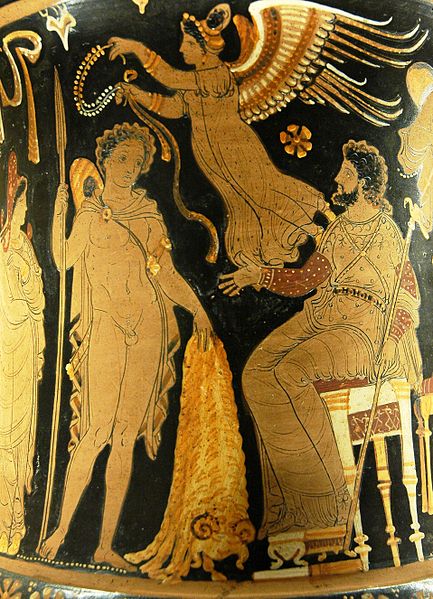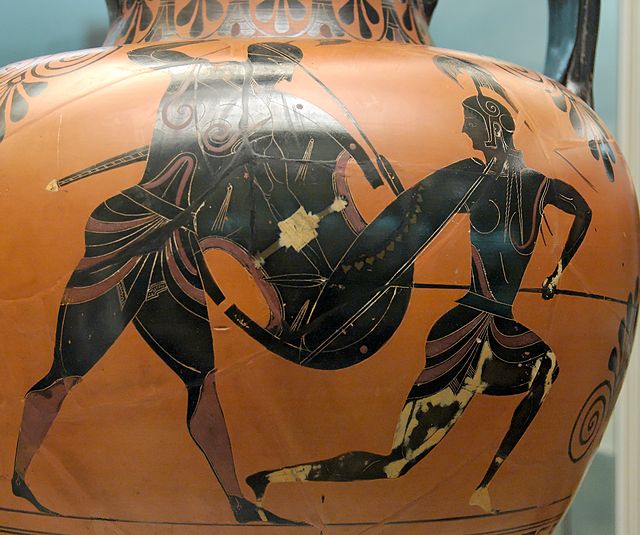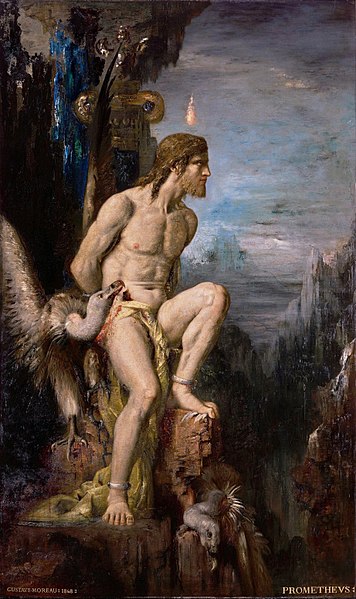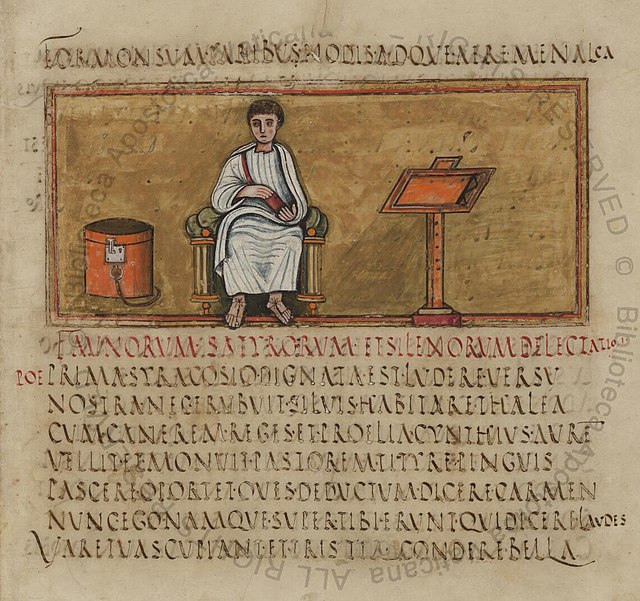Jason was an ancient Greek mythological hero and leader of the Argonauts, whose quest for the Golden Fleece is featured in Greek literature. He was the son of Aeson, the rightful king of Iolcos. He was married to the sorceress Medea, the granddaughter of the sungod Helios. He was also the great-grandson of the messenger god Hermes, through his mother's side.
Jason on an antique fresco from Pompeii
Pelias, king of Iolcos, stops on the steps of a temple as he recognises young Jason by his missing sandal; Roman fresco from Pompeii, 20-25 AD.
Jason bringing Pelias the Golden Fleece, Apulian red-figure calyx krater, c. 340 BC–330 BC, Louvre
Jason and Medea - as depicted by John William Waterhouse, 1907.
Greek mythology is the body of myths originally told by the ancient Greeks, and a genre of ancient Greek folklore, today absorbed alongside Roman mythology into the broader designation of classical mythology. These stories concern the ancient Greek religion's view of the origin and nature of the world; the lives and activities of deities, heroes, and mythological creatures; and the origins and significance of the ancient Greeks' cult and ritual practices. Modern scholars study the myths to shed light on the religious and political institutions of ancient Greece, and to better understand the nature of myth-making itself.
Achilles and Penthesileia by Exekias, c. 540 BC, British Museum, London
Prometheus (1868 by Gustave Moreau). The myth of Prometheus first was attested by Hesiod and then constituted the basis for a tragic trilogy of plays, possibly by Aeschylus, consisting of Prometheus Bound, Prometheus Unbound, and Prometheus Pyrphoros.
The Roman poet Virgil, here depicted in the fifth-century manuscript, the Vergilius Romanus, preserved details of Greek mythology in many of his writings.
Phaedra with an attendant, probably her nurse, a fresco from Pompeii, c. 60 – c. 20 BC








